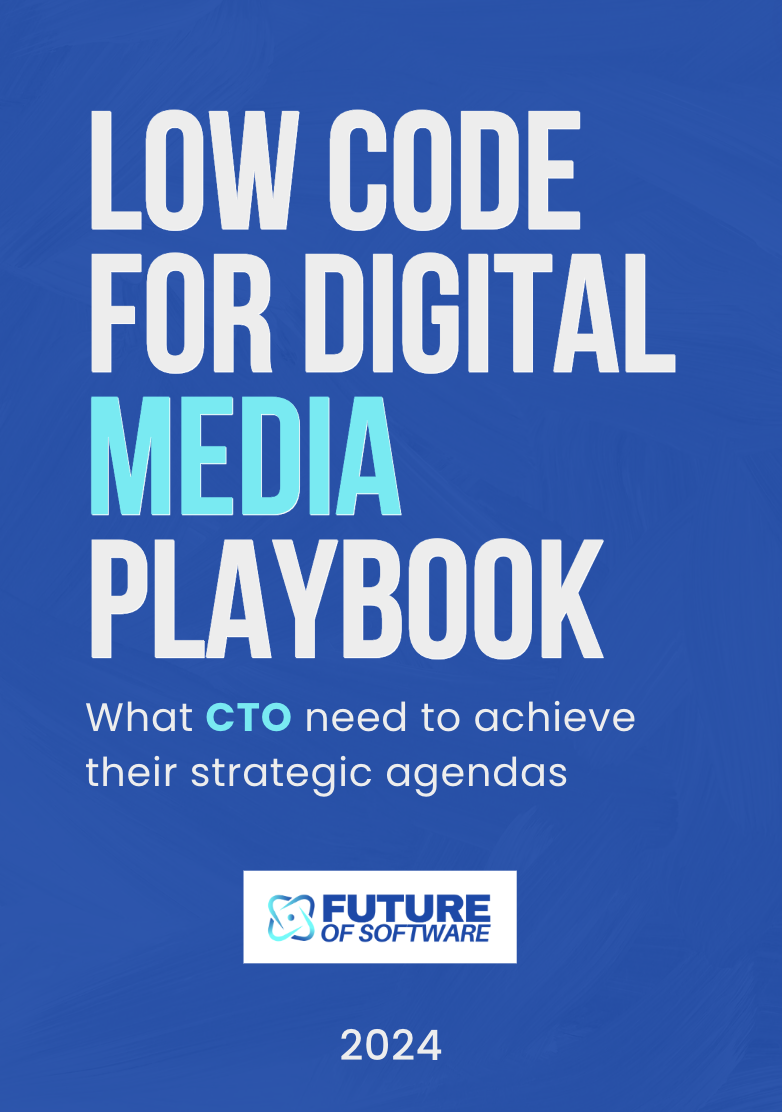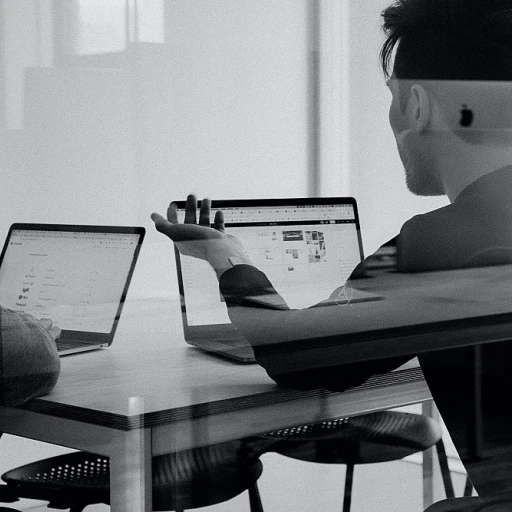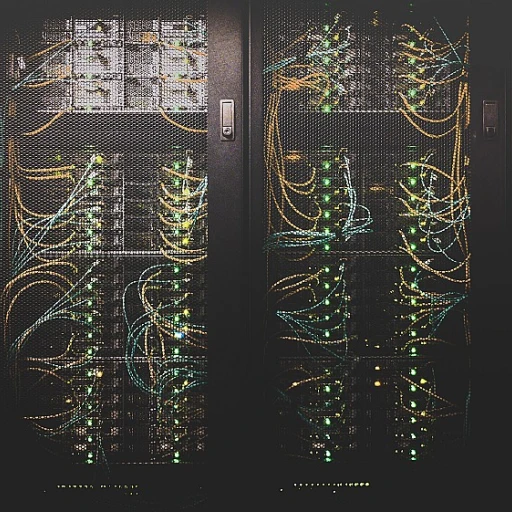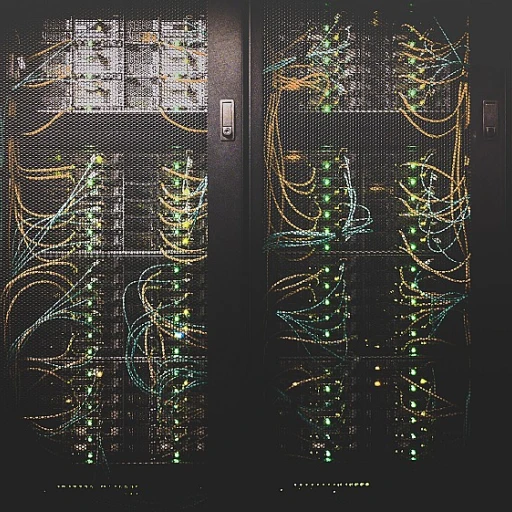
The Evolution of User Interfaces
From Command Lines to Touchscreens
The evolution of user interfaces has been a fascinating journey, reflecting the rapid advancements in technology and the changing needs of users. Initially, human-computer interaction (HCI) was limited to command-line interfaces, where users had to input text commands to interact with computers. This required a certain level of computer science knowledge and cognitive effort, making it less accessible to the general public.
The Advent of Graphical User Interfaces
With the introduction of graphical user interfaces (GUIs), the interaction design landscape transformed significantly. GUIs allowed users to interact with digital systems through visual elements like windows, icons, and menus, making computers more user-friendly and accessible. This shift was pivotal in the industry, as it enabled a broader audience to engage with technology without needing extensive technical expertise.
Touchscreens and Beyond
As technology continued to evolve, touchscreens became a staple in user interface design. This innovation further simplified the way users interact with devices, offering a more intuitive and direct method of interaction. The rise of mobile devices and tablets has cemented touchscreens as a crucial component of modern user experiences.
Looking Ahead
Today, we are witnessing the integration of artificial intelligence and real-time data processing in user interfaces, paving the way for more personalized and adaptive experiences. The future of HCI is set to be shaped by emerging technologies like virtual and augmented reality, which promise to redefine how users interact with digital environments. For a deeper dive into these advancements, explore this glimpse into the future of user interfaces.
Artificial Intelligence and Personalization
AI's Role in Tailoring User Experiences
Artificial intelligence is increasingly becoming a cornerstone in the design of user interfaces, fundamentally transforming how humans interact with computers. By leveraging AI, systems can now analyze vast amounts of data to create personalized experiences that adapt in real time to user preferences and behaviors. This shift towards personalization is not just a trend but a necessity in today's digital landscape, where users expect seamless and intuitive interactions.
AI-driven personalization is reshaping the industry by enabling systems to understand and predict user needs. For instance, AI algorithms can analyze user data to suggest content, products, or services that align with individual preferences, enhancing user satisfaction and engagement. This capability is rooted in the principles of human-computer interaction (HCI), where the goal is to design user-centered systems that cater to the cognitive and emotional needs of users.
Enhancing Interaction Design with AI
The integration of AI into interaction design is paving the way for more user-friendly interfaces. By understanding mental models and user behaviors, AI can assist in creating interfaces that are not only intuitive but also adaptive. This adaptability is crucial in ensuring that users interact with systems in a way that feels natural and efficient, reducing the cognitive load and improving the overall user experience.
Moreover, AI is playing a pivotal role in the development of predictive maintenance tools, which are becoming essential in various industries. These tools utilize AI to anticipate system failures and optimize performance, thereby enhancing the reliability and efficiency of digital systems. For more insights on this, you can explore the evolution of predictive maintenance tools.
As AI continues to evolve, its impact on HCI will only grow, offering new opportunities to enhance the way users interact with technology. The challenge lies in ensuring that these advancements are implemented ethically, with a focus on user privacy and data security.
Virtual and Augmented Reality
Immersive Experiences in Digital Realms
Virtual and augmented reality (VR and AR) are reshaping the landscape of human-computer interaction by offering immersive experiences that transcend traditional computer interfaces. These technologies are not just about visual enhancements; they fundamentally alter how users interact with digital environments, creating a more intuitive and engaging user experience.
In the realm of interface design, VR and AR provide a unique opportunity to rethink user interfaces from the ground up. By leveraging spatial computing, designers can create user-centered experiences that align with natural human cognitive processes. This shift towards interaction design that mirrors real-world mental models is a significant departure from the flat, two-dimensional screens that have dominated the industry for decades.
Enhancing User Interaction with Real-Time Data
One of the most compelling aspects of VR and AR is their ability to integrate real-time data into the user experience. This capability allows for dynamic interaction where users can manipulate and interact with digital objects in a way that feels tangible and immediate. The technology is being harnessed across various sectors, from gaming and entertainment to education and healthcare, providing users with unprecedented levels of engagement and immersion.
As the industry continues to evolve, the integration of artificial intelligence with VR and AR is set to enhance personalization and adaptability in user experiences. AI can analyze data to tailor interactions to individual preferences, making the systems more user-friendly and effective. This synergy between AI and immersive technologies is a testament to the ongoing evolution of human-computer interaction, as explored in the AI integration section.
Designing for the Future
As VR and AR continue to mature, the challenge lies in creating interfaces that are not only immersive but also accessible and inclusive. Designers must adhere to HCI principles that prioritize user-centered design, ensuring that these technologies are accessible to a broad audience. The design of human-computer interfaces in VR and AR must consider factors such as ease of use, comfort, and the potential for cognitive overload.
In conclusion, the rise of VR and AR is a pivotal moment in the evolution of human-computer interaction. By offering new ways for users to interact with digital environments, these technologies are setting the stage for a future where interaction is more intuitive, immersive, and personalized than ever before.
The Rise of Natural Language Processing
Understanding the Role of Natural Language Processing in HCI
Natural Language Processing (NLP) is revolutionizing the way humans interact with computers. As a subset of artificial intelligence, NLP focuses on enabling computers to understand, interpret, and respond to human language in a way that is both meaningful and useful. This technology is becoming increasingly integral to the design of user interfaces, making them more intuitive and user-friendly.
One of the primary benefits of NLP in human-computer interaction is its ability to facilitate more natural and efficient communication between users and systems. By leveraging NLP, designers can create interfaces that allow users to interact with technology using everyday language, reducing the cognitive load and making digital experiences more accessible. This aligns with the principles of user-centered design, which prioritize the needs and mental models of users in the development of interfaces.
Enhancing User Experience Through Real-Time Interaction
Incorporating NLP into interaction design not only improves the user experience but also enables real-time interaction. This is particularly important in industries where time-sensitive data is critical. For example, in customer service, NLP-powered chatbots can provide immediate assistance, enhancing user satisfaction and streamlining operations.
Moreover, NLP contributes to the personalization of user experiences by analyzing user data to tailor interactions. This personalization is a key aspect of modern HCI, as it allows systems to adapt to individual user preferences and behaviors, creating more engaging and relevant experiences.
Challenges and Considerations in NLP Implementation
Despite its potential, the integration of NLP into human-computer interaction is not without challenges. One significant concern is ensuring the accuracy and reliability of language processing, as misinterpretations can lead to user frustration. Additionally, ethical considerations, such as data privacy and the potential for bias in language models, must be addressed to maintain trust and credibility in digital systems.
As we continue to explore the capabilities of NLP, it is essential to balance technological advancements with ethical considerations, ensuring that the development of user interfaces remains focused on enhancing human experiences while safeguarding user data and privacy.
The Impact of IoT on Interaction
The Internet of Things: A New Dimension in Interaction
The Internet of Things (IoT) is reshaping the landscape of human-computer interaction by embedding technology into everyday objects, creating a network of interconnected devices. This integration allows for seamless interaction between users and their environments, enhancing user experiences and offering new possibilities in interface design.
IoT devices are transforming how users interact with technology by providing real-time data and feedback. This capability enables more intuitive and user-friendly interfaces, aligning with the principles of user-centered design. As devices become more interconnected, the need for cohesive interaction design becomes paramount, ensuring that users can navigate this digital ecosystem efficiently.
Enhancing User Experience through Interconnectivity
With IoT, the user experience is no longer confined to a single device. Instead, it spans multiple platforms and interfaces, requiring a holistic approach to design. This interconnectedness demands that designers consider the cognitive load on users, ensuring that interactions remain intuitive and do not overwhelm the user with excessive information.
Moreover, IoT's ability to collect and analyze data in real-time offers opportunities for personalization, akin to the advancements seen in artificial intelligence. By understanding user behavior and preferences, systems can adapt to provide more relevant and engaging experiences, enhancing overall satisfaction.
Challenges and Ethical Considerations in IoT
While IoT presents numerous opportunities for enhancing human-computer interaction, it also introduces challenges and ethical considerations. Privacy and security are paramount concerns, as the vast amount of data collected by IoT devices can be vulnerable to breaches. Ensuring that user data is protected and used ethically is critical in maintaining trust in these systems.
Additionally, the complexity of managing multiple interconnected devices can pose challenges in terms of system reliability and user support. As the industry continues to evolve, addressing these challenges will be essential in realizing the full potential of IoT in enhancing user experiences.
Challenges and Ethical Considerations
Balancing Innovation with Responsibility
As we delve deeper into the digital age, the intersection of emerging technologies and human-computer interaction (HCI) presents both opportunities and challenges. The rapid evolution of user interfaces, powered by artificial intelligence and augmented reality, is reshaping how users interact with systems. However, this transformation brings forth significant ethical considerations that must be addressed.
Data Privacy and Security
With the integration of AI and IoT, vast amounts of user data are collected to enhance personalization and user experience. While this data-driven approach offers more tailored interactions, it raises concerns about privacy and security. Ensuring that user data is protected and used ethically is paramount. The industry must prioritize transparent data practices and robust security measures to maintain user trust.
Designing for Inclusivity
As technology advances, the design of user interfaces must consider diverse user needs. Inclusive design principles are essential to ensure that digital experiences are accessible to all, regardless of physical or cognitive abilities. By adopting user-centered design approaches, developers can create interfaces that accommodate a wide range of users, promoting equality in digital interactions.
Addressing Cognitive Overload
The complexity of modern interfaces can lead to cognitive overload, where users struggle to process information efficiently. Interaction design must focus on creating user-friendly experiences that align with users' mental models. Simplifying interfaces and providing intuitive navigation can help mitigate this challenge, allowing users to interact with systems more effectively.
Ethical AI and Decision-Making
Artificial intelligence plays a crucial role in shaping user experiences, but it also raises ethical questions about decision-making. Ensuring that AI systems are designed with ethical considerations in mind is vital. This includes addressing biases in AI algorithms and ensuring that automated decisions align with human values and societal norms.
In conclusion, the future of HCI is not just about technological advancements but also about addressing the ethical implications of these innovations. By focusing on responsible design and ethical considerations, the industry can create digital experiences that are not only innovative but also equitable and trustworthy.















